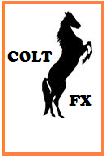
EUR/USD (hourly)
It tested 1.3350 at midday and this proved to be the pair’s low of the week as US economic data prompted a complete about-turn. The misery continues in the US housing sector as Pending Home Sales slumped another 4.0% in November, while in the manufacturing sector factory orders plunged 4.6%. The FOMC meeting minutes which were released later on Tuesday did nothing to relieve the gloom, with predictions of a fall in GDP for 2009 and rising unemployment through to 2010. The euro rose to test 1.35 as Tuesday ended and pushed through to 1.36 as the European session opened on Wednesday morning. It powered on to 1.37 on reports that the US private sector had shed 693K jobs in December, much worse than expected. Thursday’s US jobs numbers saw new unemployment claims come in lower than expected. However, this was explained as being caused by people holding back applications because of the holidays. The news that the number of US jobless had hit a 26-year high raised concerns that Friday’s Non-Farm payrolls could hit 700K+ and the euro rose to tip 1.38. Friday saw the NFP actually survey in line with expectations, well short of the market’s fears and the dollar soared, pushing the euro down to close the week at 1.3429.
GBP/USD (hourly)
The pound saw gains across the board, including its biggest weekly rise against the euro in 10 years. On Tuesday, UK services surprised by ticking higher in December but still marked the eighth consecutive month of contraction and ended the worst year for the service sector since records began 12 years ago. The pound had just fallen back to test support at 1.45 when the discouraging US numbers gave sterling a boost. The week’s key sterling event came on Thursday when the Bank of England cut interest rates by the widely anticipated 50bps. The pound rose on the news and tested 1.5350. Friday morning’s news that UK manufacturing production fell 2.9% in December to make 2008 the worst year since the bad old days of 1981 had little effect on the pound, which rose through the European session to test 1.5350 once more. US Non-Farms saw the pair slip down to around 1.5150 and cable closed the week at 1.5165.
EUR/GBP (hourly)
The yen saw steady gains against the greenback as investors became more risk averse. Notice how USD/JPY almost tracks the Dow Jones Industrial Average. The pair closed the week at 90.22, a tad above the key psychological level of 90.
Calendar and outlook
This week’s important US data includes producer price inflation numbers on Thursday and consumer prices on Friday. US manufacturing activity will be surveyed for New York State on Thursday and on Friday we’ve industrial production for the States as a whole. Unemployment is a growing concern around the world at the moment, so you should pay careful attention to Thursday’s Unemployment claims. This could be a higher than expected if people were holding off registering as unemployed over the holidays as was suggested. Wednesday’s retail sales and Friday’s consumer sentiment could also move the market.
The highlight of the week will undoubtedly be the ECB’s interest rate announcement. A cut of 50bps is widely expected and remember, the follow-up press conference often causes high volatility. Jean-Claude Trichet has a couple of public speaking engagements in the run up to Thursday. There’s also European industrial production on Wednesday and consumer prices on Thursday.
The UK sees retail sales and housing data released in the early hours of Tuesday morning. The deputy governor of the Bank of England will be speaking in Manchester on Friday.
The governor of the Bank of Japan will also be speaking on Friday.
I see EUR/USD finding resistance at 1.3550 and support at 1.3250, with further downside action to 1.2330 a possibility in the near future.
GBP/USD still looks pretty range-bound and should move between 1.5350 down to 1.45.
USD/JPY should encounter support at 87.50 and resistance at 91.50.







No comments:
Post a Comment